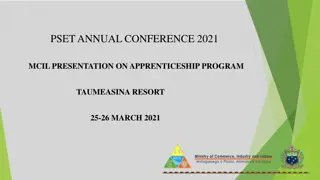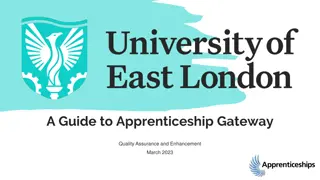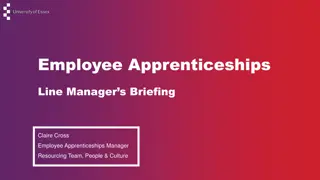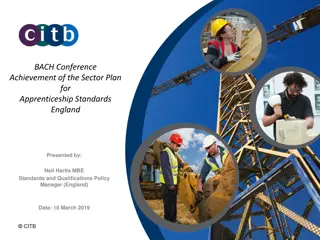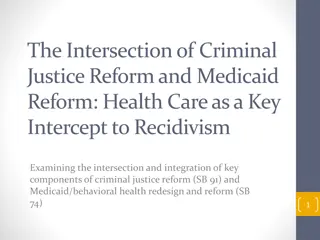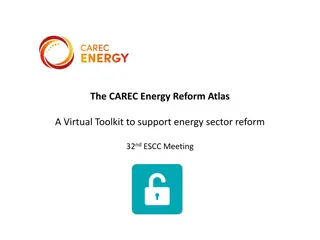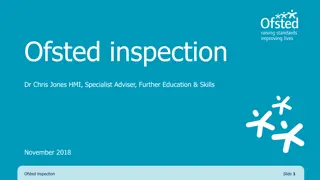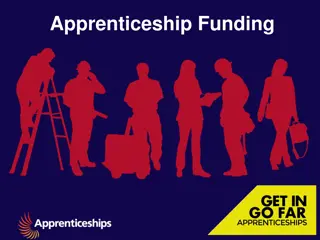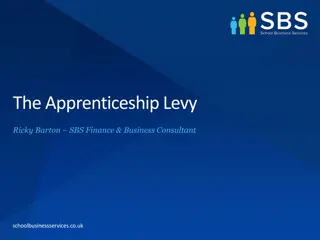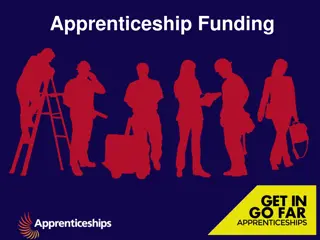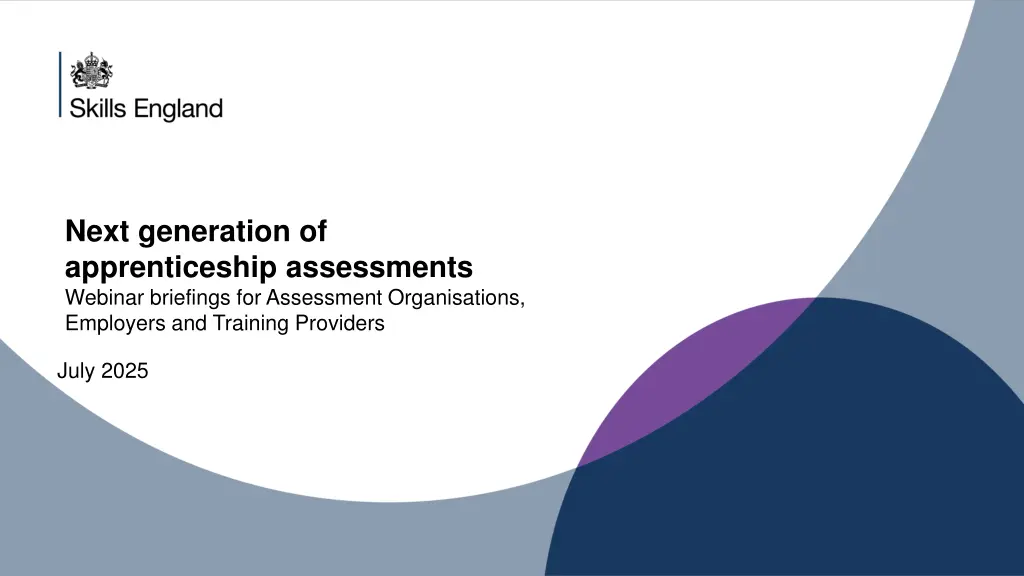
Next Generation of Apprenticeship Assessments - July 2025
Discover the principles guiding the next generation of apprenticeship assessments, the conversion of these principles into assessment design, and key insights gained from stakeholders in the past 6 months. Learn about the importance of involving various stakeholders for a simplified and quality apprenticeship assessment experience.
Download Presentation

Please find below an Image/Link to download the presentation.
The content on the website is provided AS IS for your information and personal use only. It may not be sold, licensed, or shared on other websites without obtaining consent from the author. If you encounter any issues during the download, it is possible that the publisher has removed the file from their server.
You are allowed to download the files provided on this website for personal or commercial use, subject to the condition that they are used lawfully. All files are the property of their respective owners.
The content on the website is provided AS IS for your information and personal use only. It may not be sold, licensed, or shared on other websites without obtaining consent from the author.
E N D
Presentation Transcript
Next generation of apprenticeship assessments Webinar briefings for Assessment Organisations, Employers and Training Providers July 2025
Background- Reminder Send to Back to reveal the Questions? Clarifications? Please use the Q&A function, and we ll answer as many questions as we can
Apprenticeship assessment principles Allow on-programme assessment where appropriate No unnecessary duplication Proportionate Allow centre- assessment where appropriate Shorter plans with minimal level prescription Employer-verified behaviours Minimum number of assessment methods Assessment at the right time, in the right place Make best use of technology
Converting principles into assessment design and delivery Where a mandatory qualification or required regulatory assessment sufficiently covers the assessment outcomes Exceptional additional prescription apprenticeship assessment Standard low-prescription apprenticeship assessment Generic, brief assessment plan will describe that the apprenticeship will be assessed by completion of the mandatory qualification or regulatory assessment Minimal level of prescription required to meet DfE assessment principles alongside generic rules (e.g. Ofqual, SE general requirements ) AOs develop specifications and assessments that follow the approach laid out We expect the majority of assessment plans to follow this model Where medium or high risk occupations are identified, additional prescription may be added (e.g. for safety, regulatory compliance, etc.) AOs develop specifications and assessments that follow the approach laid out All foundation and shorter duration apprenticeships will be delivered in line with the reformed assessment model Five further apprenticeships are currently being used to trial application of the reform policy Early tranches of apprenticeship assessments for revision are being agreed by DfE and Skills England 4
Over the past 6 months we have heard from key stakeholders We welcome the desire to simplify apprenticeship assessments and create a better experience for apprentices Vital that Skills England involves AOs, employers and others in the development of new assessment plans New apprenticeship assessments must retain proportionate quality Some additional prescription will be needed to secure currency with employers in some cases Assessment organisations will need time to implement the changes 6
Ongoing approach Send to Back to reveal the
Update on progress Employer confidence From February: series of policy sprints to convert principles into actionable policy From June: trialling emerging policy in 5x test apprenticeships (Assistant Accountant, Adult Care Worker, Data Technician, Early Years Educator, Carpentry & Joinery) nearing completion Throughout: ongoing, regular engagement with assessment organisations and other stakeholders Throughout: Close joint working with Ofqual, Office for Students and others Now: preparation for implementation, taking account of existing pipeline and government priorities Scope for innovation and proportionality Validity, consistency, reliability Revised Apprenticeship Assessment Simplification Deliverability 8
Aims for Ofquals new regulatory framework for apprenticeship assessment To embed DfE s Apprenticeship Assessment Principles in Ofqual s regulation To secure awarding organisations compliance with the new apprenticeship assessment plans published by Skills England To specify key requirements for the design of apprenticeship assessment to ensure their validity To enable Ofqual to hold awarding organisations to account for the design and delivery decisions they have made One regulatory framework covering all apprenticeship assessments, including foundation apprenticeship assessments
Proposals for Ofquals regulatory framework for apprenticeship assessment cover: Assessment structure and synoptic assessment Setting assessments Purposes Content Marking assessments Assessment design Grading Standard setting Assessment strategy requirements Disapplication of certain General Conditions Employer engagement Transition arrangements
Content of the assessment plan Send to Back to reveal the
Standard assessment plan content Section Assessment details Description Explains a number of core principles that apply to the apprenticeship s assessment, including the purpose of assessment outcomes and the expectation that all outcomes must be met. This section also sets out expectations relating to sampling, timing, and marking of assessments. Clarifies that the employer is responsible for verifying that each behaviour statement has been sufficiently demonstrated. Summarises the content of the occupational standard into assessment outcomes and explains which knowledge and skills statements map to each outcome. Where there is a mandatory qualification, these outcomes describe the content that is not assessed by the qualification only. Assessment of behaviours Assessment outcomes Notes specific requirements in relation to individual assessment outcomes or groups of outcomes. This may include describing specific priorities that inform the approach to assessment. Describes the characteristics of a pass and any grades above a pass. Assessment requirements Performance descriptor
Securing confidence and quality together Send to Back to reveal the
Your role in the next generation of apprenticeship assessment Stakeholder Support Opportunity for assessment organisations to produce valid and reliable assessments that secure employer confidence. Think about: - the opportunities and benefits the DfE principles create - the apprentice experience - your changing responsibilities What matters most for currency with employers? Think about: - risk categories and assessment relevant to the occupation - assessment methods - assessment hurdles - timing - how you will verify behaviours have been met All Employers
Your role in the next generation of apprenticeship assessment Stakeholder Support How can you streamline delivery and innovate? Think about: - the level of prescription that enables valid and reliable assessment - delivery models that currently work - how you continuously improve - cost/burden considerations - Ofqual s proposed regulatory framework for apprenticeship assessment (where relevant) Implications for your endorsement of the apprenticeship. Think about: - the impact of streamlining, e.g. sampling, centre-assessment - different assessment organisations taking different approaches - alignment with professional body requirements - maintaining link to recognition/registration Assessment organisations Professional bodies
Your role in the next generation of apprenticeship assessment Stakeholder Support How can you support streamlining? Think about: - how to support centre assessment - how you determine learner readiness to ensure the assessment happens at the right time - delivery models that currently work - how you work with the assessment organisation to continuously improve - cost/resourcing considerations Training providers
Next steps Send to Back to reveal the
Moving into implementation SE: initial drafting (drawing on existing EPA plan, stakeholder insight, new policy) SE/DfE: determine next batch of assessment plans for revision SE: assemble reference group of persons (TB, AO/s, TP/s, PSRB/s) Reference group/s: Validation and refinement meeting SE: Amends, and submit for approval SE: publish list We are aiming to: Finalise lessons learned from 5x test assessment plans in the next fortnight Commence this process for early batches as soon as possible Publish lists of upcoming batches on the SE website as soon as we can Funding band reviews will commence once an improved method for calculating assessment costs is concluded, in early 2026
Anything else you would like to discuss? Please use the Q&A function, and we ll answer as many questions as we can ApprenticeshipAssessment.SKILLSENGLAND@education.gov.uk Skills England




